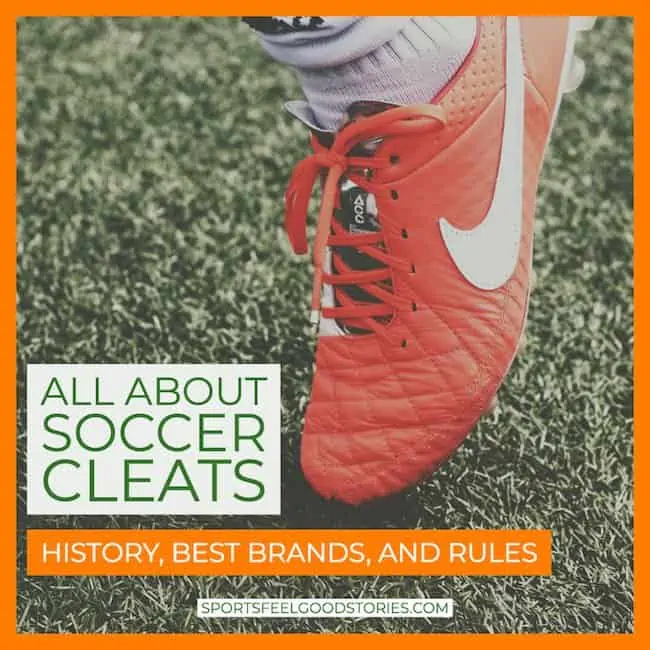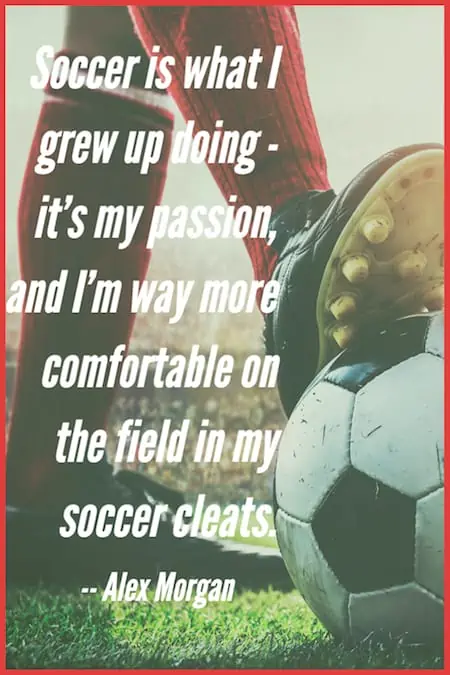You can tell a lot about a player based on what soccer cleats or boots a player wears on the pitch. Cleats range from complex neon-colored to more simplified black cleats in futbol.
The first thing to remember is that it is a privilege to play with cleats. Regardless of whether or not you have your dream pair of cleats, it is a privilege to own your pair of cleats because many around the world don’t. They play in the streets barefooted.
What are soccer cleats in soccer?
Soccer cleats are a specific type of footwear worn by players when playing soccer. These cleats, typically made of leather-like materials, are shaped like a typical tennis shoe but more durable and made with modern science to enhance player ability with quickness and touch.
On the bottom of the shoes are studs, similar to what is seen on the bottom of football and baseball cleats, which help players gain traction on different types of playing surfaces, such as synthetic turf, long grass, short grass, etc.

Key Takeaways
- Soccer cleats have been around for nearly five centuries, dating back to England’s King Henry VII.
- Modern cleats are lighter than ever. Some are also laceless.
- There are a number of different types of cleats, varying from cleats with studs to shoes with flat soles.
- Adidas and Nike dominate the soccer cleat manufacturing industry.
- They can be used for most sports, but football and baseball cleats cannot be used for soccer.
History of Soccer Cleats
While soccer has only been an organized sport since the latter half of the 1800s, the sport’s origins are centuries older. The first soccer cleats were discovered in King Henry VIII’s wardrobe in 1525.
Over the years, cleats have significantly changed. Past cleats have been plastered with heavy leather with longer and fewer studs. Brands still around today, such as Valsport and Hummel, dominated the cleat manufacturing industry in the early 1900s.
Since the conclusion of World War II, cleats began to become much lighter and offer little protection for players on the wrong end of a tackle. This is because it became cheaper and easier to transport cleats overseas and for players to showcase their abilities with better ball control. Over the past decade, laceless cleats have become more popular, allowing for better contact whenever touching the ball.
Different types of soccer shoes
There are also different types of soccer shoes/cleats. Alongside standard firm ground, soccer cleats for regular outdoor soccer, other footwear includes indoor and turf soccer shoes. These are without studs for alternate variations of soccer, like indoor soccer and futsal.
Turf shoes have minimized rubber studs. They are often favored in adult outdoor leagues played on turf because they are better on joints with a more substantial cushion.
Soccer Shoe Types Video
Biggest Soccer Cleats Brands
The soccer cleat industry is massive, with a lot of competing brands. Popular American brands like Nike and Under Armour are joined by international powers Adidas, Umbro, Puma, and Diadora as the world’s top soccer cleat manufacturers.
Professional Soccer Player Influence
While soccer cleats aren’t quite as big as basketball shoes, they still have a massive influence. The ten biggest cleat deals in soccer make a combined $123 million per year, with Puma paying Brazilian superstar Neymar a world-record $31million a year.
Argentina’s Lionel Messi receives $24 million annually from Adidas in a lifetime contract. At the same time, Portugal’s Cristiano Ronaldo followed Lebron James and Michael Jordan in signing a lifetime contract with Nike, taking in $ 20 million annually from the deal.
How to break in soccer boots
What are the rules for soccer cleats?
One of the universal rules for soccer cleats is there cannot be a stud at the front of the cleat. This includes professional soccer. It is down to the referee to decide whether or not a cleat is legal to play. There are typically 6-12 studs surrounding the outside frame of the sole.
What are studs made of?
Since the most demand for soccer cleats is youth soccer, the most common studs are made of plastic and rubber. The other stud type is made of metal, used chiefly in professional soccer for slippery and soft surfaces.
Are cleats metal?
Players can get metal soccer studs, as often seen in professional soccer. However, metal studs are usually outlawed in youth soccer. Many professional soccer players still use rubber studs, so metal studs are not necessary to make them pro. Metal cleats often help players change direction quickly on softer surfaces.

Are soccer cleats expensive?
Top-end soccer cleats can be very expensive, ranging anywhere from $120-$300 for a pair. More affordable cleats are available for under $100 and sometimes even under $50. Be prepared to spend at least $60 for a decent pair of brand-new cleats.
Nike’s CR7 Ballon d’Or cleat was the most expensive cleat ever sold, which sold for $7,999 at an auction. Cleats of former players Rio Ferdinand, John Terry, and Wayne Rooney have sold for over $500,000 to benefit charity.
How long do soccer cleats last?
This depends on all the materials the cleat is made of. Most cleats will last at least five or six months. More expensive cleats consist of higher-quality materials, allowing them to outlive lower-quality cleats.
Can soccer cleats be used for baseball, softball, football, and rugby?
Soccer cleats are the most versatile cleats in sports. Soccer has some of the most restrictive rules for what cleats are allowed, allowing them to be legal in most sports that allow studs. While having sport-specific cleats can only enhance an athlete’s performance in that sport, soccer cleats should be enough to get the job done. Many kickers and punters in the NFL wear them.
Can baseball cleats be used for soccer?
A baseball-specific cleat is most likely not legal to play in soccer. Most soccer organizations don’t allow players to wear a front stud attached to most baseball cleats. To verify this, check with the league with which you are participating.
Can football cleats be used for soccer?
Like baseball, because football cleats usually have a stud in the front, they are not allowed in soccer. Soccer cleats can have a small knob but not a full-sized stud in the front of the cleat.
Top Brands
- Copa Mundial – Adidas
- Kaiser 5 – Adidas
- Mercurial – Nike
- Speciali – Umbro
- Tiempo – Nike
- King – Puma
- Predator – Adidas
- Furon – New Balance
- Nemiziz – Adidas
- Magista – Nike
Guidelines for soccer cleats
- To make the most of a cleat’s short lifespan, only use them when needed. Once you are done playing, take them off and store them away.
- Don’t walk on the concrete or track with cleats. Concrete damages the studs, making them less sharp and less effective. Walking or running on the track with studs will damage the track.
- Take care of them. Keep them clean without throwing them in the washer or dryer. Store them responsibly at room temperature, away from sunlight. Tie and untie them each time you put them on; don’t force your foot into the cleat with the shoelaces tied.
- Have a backup pair. One should always have two pairs of cleats available, if possible. This is especially important if you train or play every day. Invest in a pair for practice and another pair for games.
- When buying new cleats, break them in over the course of several training sessions. Ideally, these training sessions will be outside of your team’s official training sessions, so you have better control over the best practices for breaking in your new cleats.
Cleats Quotes and Sayings
I’m a beauty in the streets and a beast in my cleats.
Unknown
Forget the glass slippers; this princess wears soccer cleats.
Unknown
Football boots are very technical and have lots of specific requirements.
Zinedine Zidane
Give a girl the right shoes, and she can conquer the world.
Unknown
I learned all about life with a ball at my feet.
Unknown
By Nathan Dunn
Nathan is a sportswriter based in Kansas City, Missouri.
Overtime
You are on our Soccer Cleats History, Best Brands, and Rules page.
You might like:
Soccer Positions: Roles and Responsibilities
